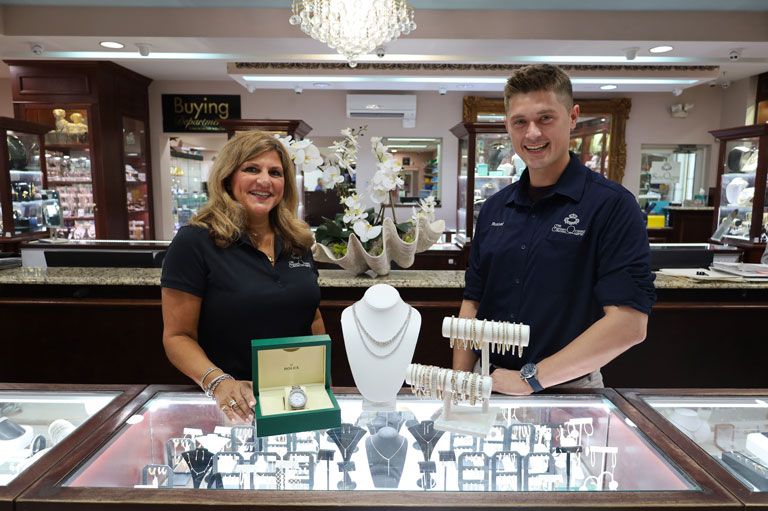This magnificent Tiffany & Co. sterling silver ewer is a tour de force of late 19th‑century American silver design, richly decorated with classical ornament and playful putti in high relief. The tall, sculptural form rises from a stepped, hexagonal base and flares upward into a gracefully spiraled body and neck, capped by an exuberantly scrolled handle that terminates in a reclining putto holding a cluster of grapes. Every surface demonstrates Tiffany’s mastery of repoussé and chasing, from the swirling fluted neck to the exuberant garlands and grapevine clusters that encircle the vessel.
The bulbous body of the ewer is enveloped in a dynamic scene of frolicking putti, entwined amid grapevines and foliage in a bacchanalian motif that celebrates abundance and festivity. The sense of movement is heightened by the twisting lower section, which rises from the base in spiraling flutes that unify the composition and guide the eye toward the soaring spout and sculptural handle. The interplay of smooth, polished silver with densely chased relief captures the light beautifully, emphasizing the drama and depth of the decoration.
This exceptional ewer represents the highest level of Tiffany & Co.’s silver production in the late 19th century, a period when the firm’s design director, Edward C. Moore, was collecting and studying world-class decorative arts to inspire Tiffany’s own creations. Notably, Edward C. Moore himself owned an example of this exact ewer, which was featured in the Metropolitan Museum of Art’s exhibition and catalog “Collecting Inspiration: Edward C. Moore at Tiffany & Co.”, underscoring the importance and prestige of the design within Tiffany’s artistic legacy.
Grand in scale, exquisitely detailed, and historically significant, this ewer embodies the Gilded Age ideal of silver as both a functional object and a sculptural artwork. It is a rare opportunity to own a piece that reflects the same design sensibilities celebrated in one of America’s most important silver collections and in the halls of the Metropolitan Museum of Art.



